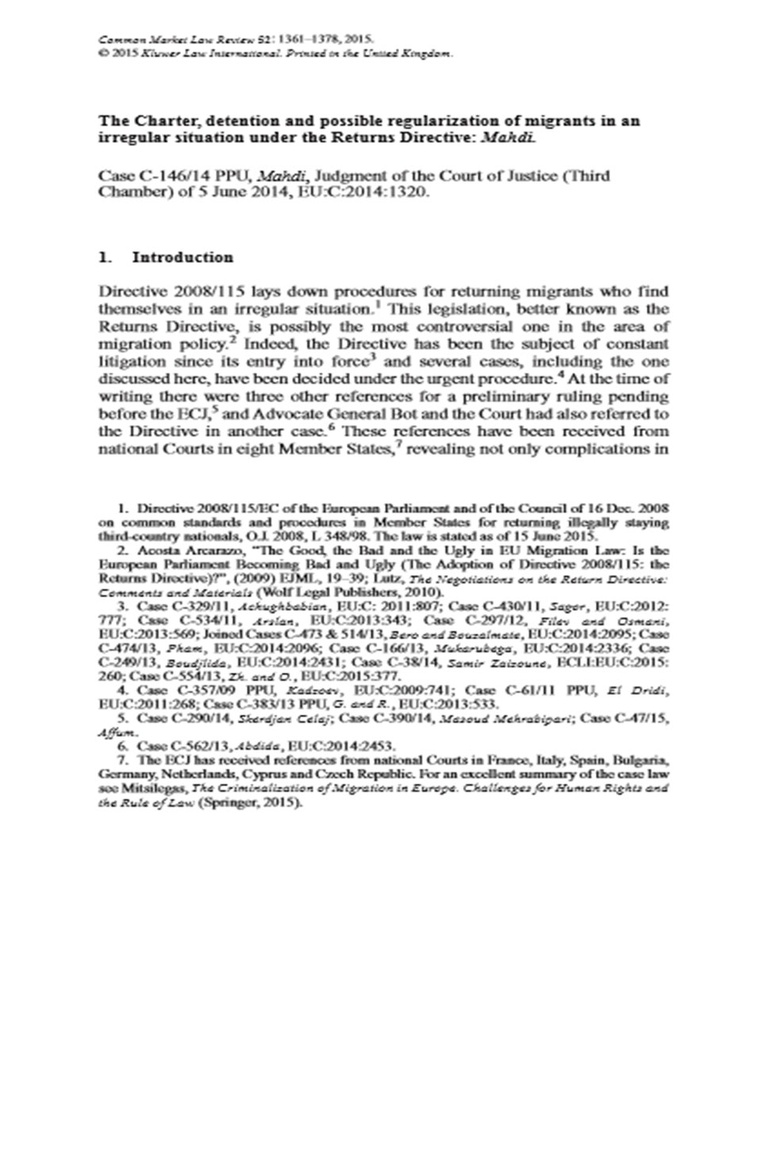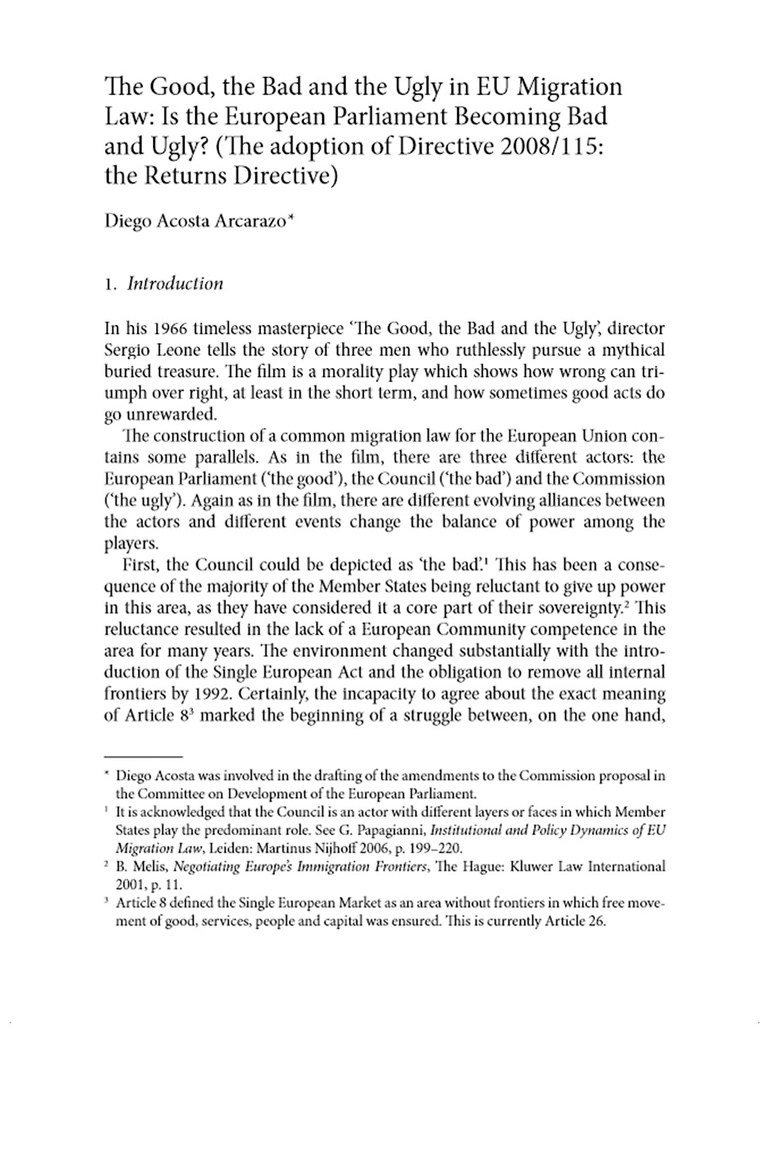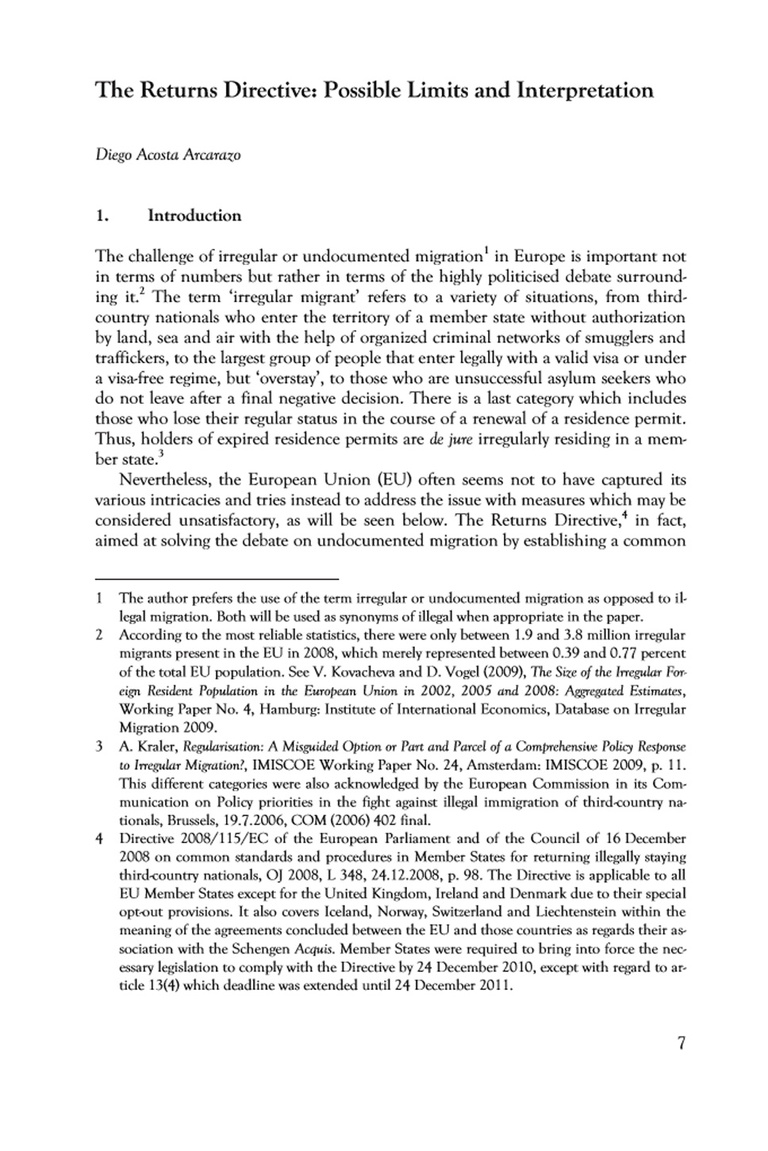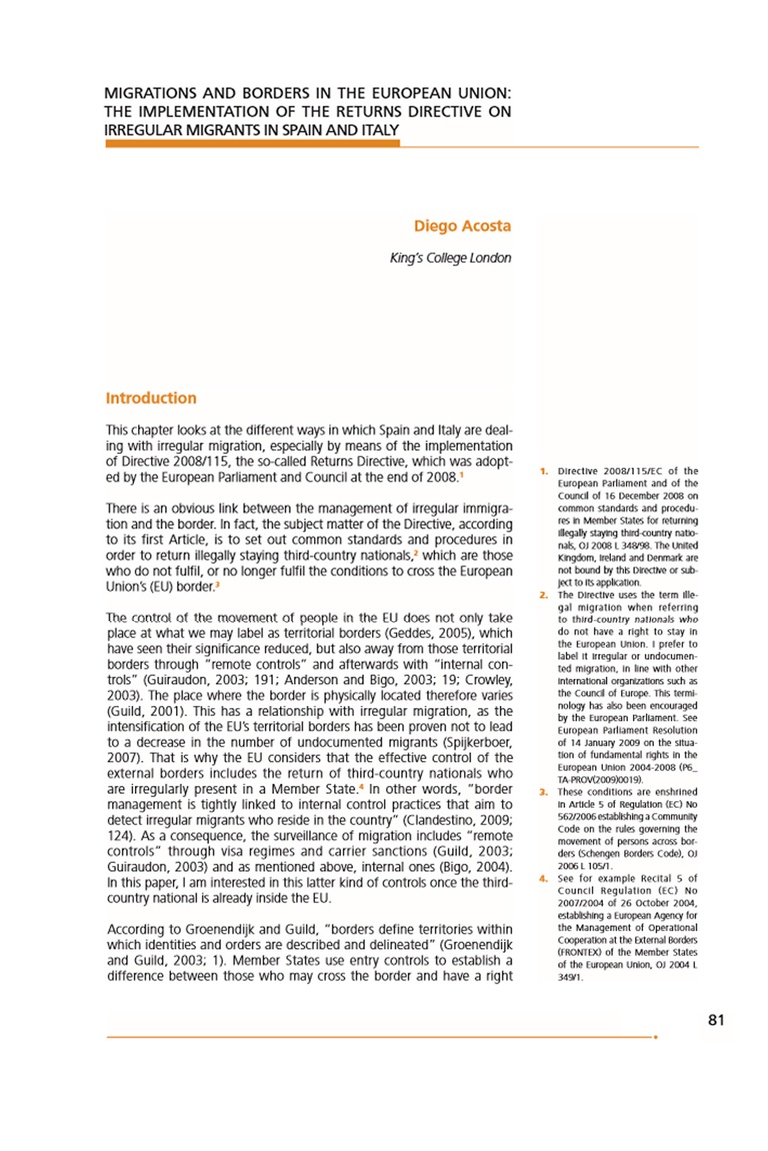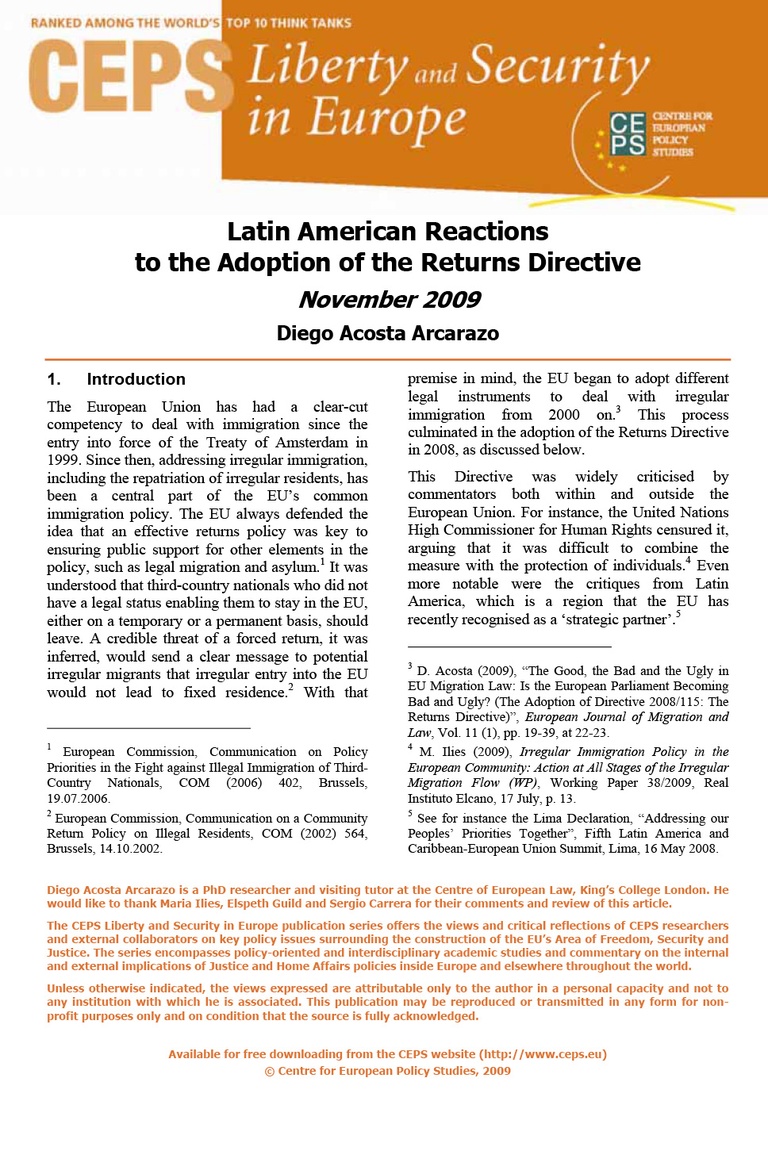Irregular or undocumented migration in the EU is a multifaceted phe nomenon. Its complexity arises from the fact that irregular migrants are an amazingly heterogeneous category, raising questions about the adequacy of dealing with it without addressing its various intricacies. Irregular migration has also been highly politicized, both at the national and EU levels, with rhetoric often depicting it as an 'invasion'. This politicization has in some cases led to its criminalization. However, this politicization is not matched by the number of irregular migrants actually entering the EU. According to the most reliable statistics, there were only between 1.9 and 3.8 million irregular migrants in 2008, barely representing between 0.39 and 0.77 percent of the total EU population of around 500 million.
To understand and correctly assess this phenomenon and European responses, it remains vital to explore the past, present and future of measures that the EU and its member states have implemented in an attempt to deal with the issue, most notably regularization procedures and the adoption of various European directives.
Suggested citation: Diego Acosta, ‘Handling Irregular Immigration in the EU ’, ISN Insights, Zurich, 8 February 2011.

